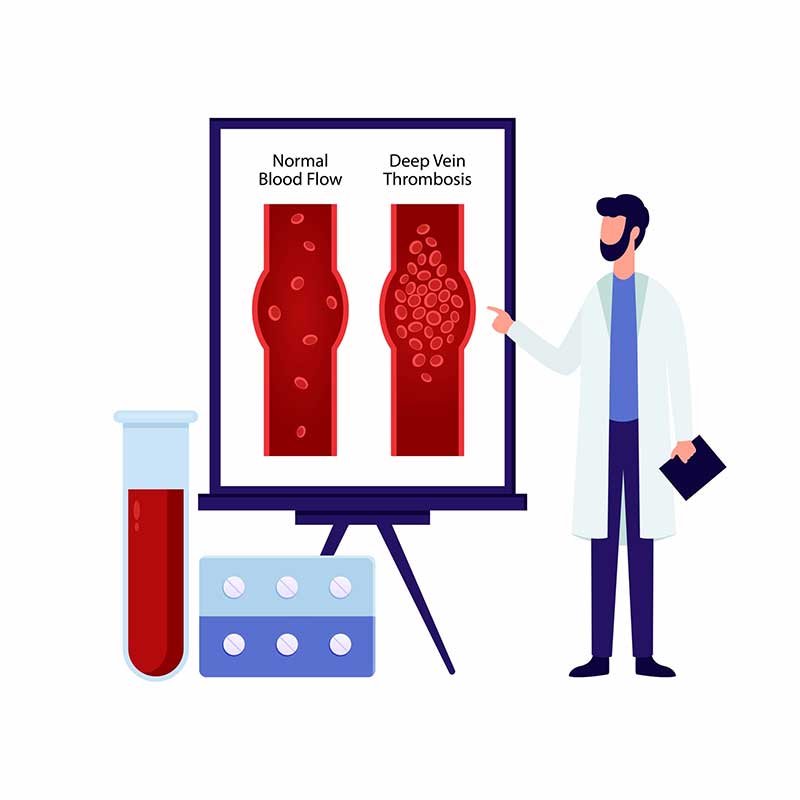
Blood clots can develop in one or more of the deep veins in your body and very commonly in your legs in a lot of situations. Deep vein thrombosis (DVT) can occur without much symptoms other than pain and swelling in leg.
What are the causes of DVT?
Certain medical conditions, surgery or an accident, HRT’s and OCP’s, and a prolonged period of inactivity after any physical injuries, confinement to the bed are few major causes of DVT. Few risky behaviours like smoking and alcohol consumption can predispose a person to develop a clot.
What are the symptoms of Deep Vein Thrombosis (DVT)?
Leg pain and swelling are commonly seen. Changes in the colour of the skin on the leg and the presence of Increased warmth in the area of the leg that’s swollen or painful
What happens if Deep Vein Thrombosis (DVT) is left untreated?
Deep vein thrombosis can get dangerous if not treated on time. The clot can dislodge, travel through the bloodstream and occlude blood flow to lungs leading to complications like pulmonary embolism and infarcts. On other times, the dislodged clot can pass the lungs and occlude blood flow to other solid organs too.
Symptoms of Pulmonary Embolism
- Unexplained shortness of breath
- Pain with deep breathing
- Coughing up blood
- Rapid breathing
- Faster heart rate
PE is a very serious condition. It can result in death unless immediate intervention was not sought.
Deep Vein Thrombosis prevention and approach.
Regular exercises, avoidance of sedentary lifestyles, proper rehabilitation following surgeries and keeping a watch on you weight and staying fit while consuming healthy high-fiber diet.
If one were to reach the hospital with pain in legs with associated swelling, After collecting relevant history and conducting a proper physical examination by your doctor, he/ she might suggest a few tests that are required to confirm diagnose deep vein thrombosis.
- Ultrasound
- Blood Test
- Venogram
- CT or MRI scans
Once confirmed on the diagnosis, the doctor can decide on the line of treatment which can be medical or surgical. Blood thinners and clot busters can help in preventing new clots and removing existing clots in the veins. A more radical way to ensure clots from causing pulmonary embolism was to place filters using catheters so that the dislodged clots don’t occlude blood flow to any major organs. Venous thrombectomy may be done if the plan was to go for surgical procedures and the procedure may or may not involve stent placement. The whole of treatment for DVT comes down to the patient status so the options available for treatment differs from one patient to another.
Get checked and get treated at the earliest. If you are looking for professional medical help, look no further. Book an appointment with our doctors at OneHealth hospital to know more and to discuss your treatment options.





